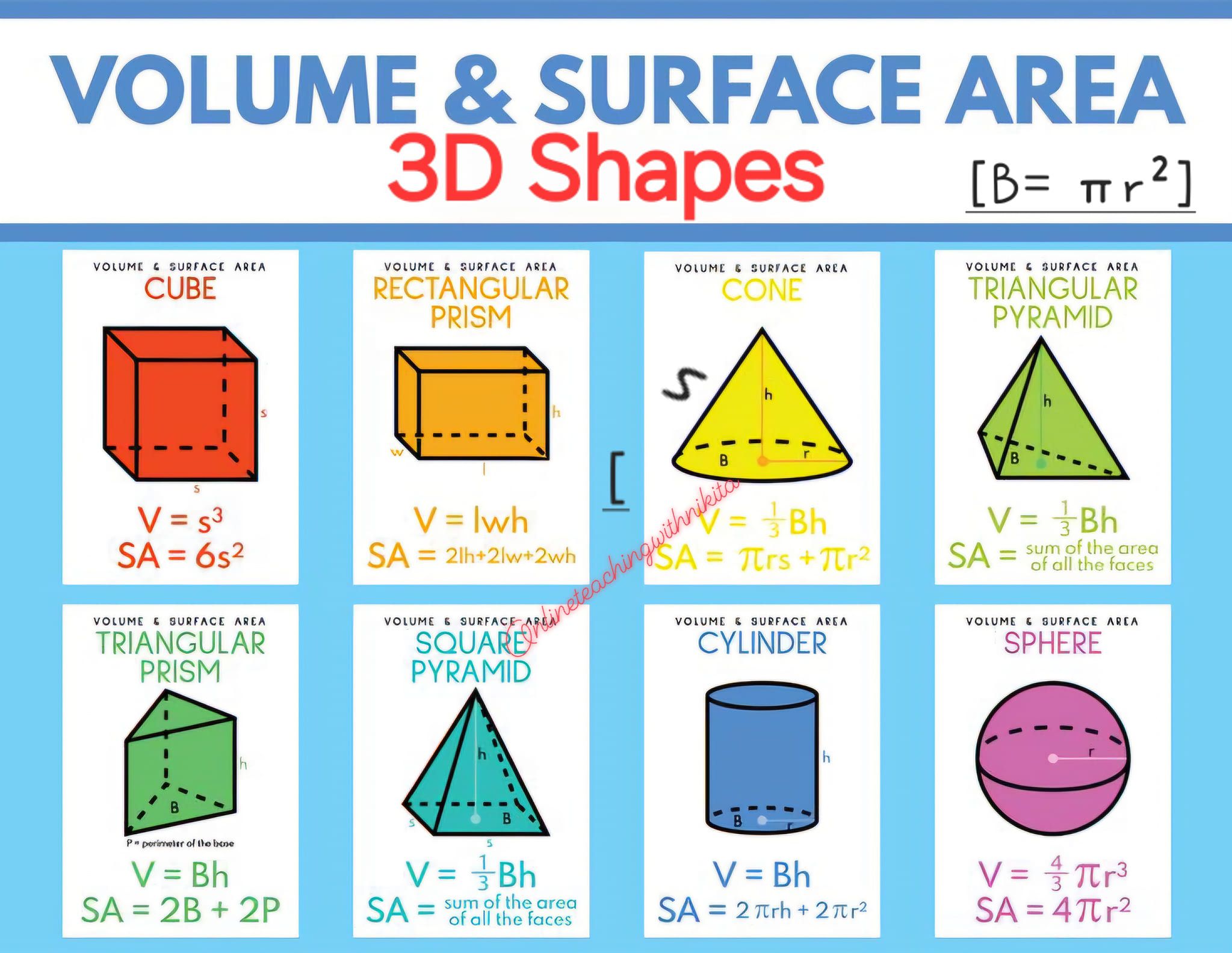AP BIO 2.3-2.8
1/26
There's no tags or description
Looks like no tags are added yet.
Name | Mastery | Learn | Test | Matching | Spaced |
|---|
No study sessions yet.
27 Terms
Fluid Mosaic Model
Structure of membranes where phospholipids form a bilayer which is like a “lake” in which a variety of proteins “float”
has a “mosaic” of components, primarily phospholipids, cholesterol, and proteins
phospholipid bilayer embedded with proteins
polar hydrophilic phosphate head and non-polar hydrophobic tails
constantly moves to fill in gaps and open up for substances
Integral membrane proteins
Proteins that are permanently attached to a biological membrane.
have hydrophobic mid-portions that hold the protein within the hydrophobic parts of the membrane
Integral proteins found inside the membrane are hydrophibic, and ones exposed to the cytoplasm are hydrophilic hydrophobic
Transmembrane proteins:
A type of integral membrane protein that spans the entire lipid bilayer.
may cross the membrane once, or as many as 12 different membrane-spanning sections
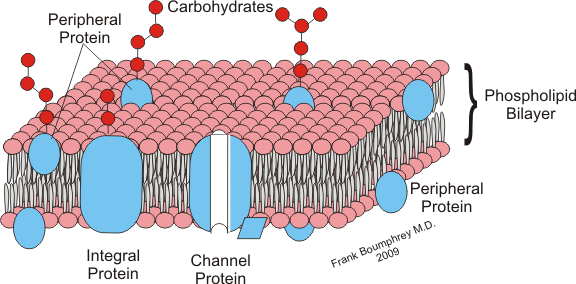
Membrane Fluidity
Cells must maintain membrane fluidity within a narrow range to maintain proper structure and function
Important factors:
Lipid composition
Temperature
What can pass:
small,nonpolar substances — very quick and can squeeze through
small, polar substances — can pass w/o proteins, but very slow
large, nonpolar — can pass but is very slow
large, polar substances or ions — to difficult to pass through without proteins
Proteins in membrane
Proteins move across the membrane evidenced by when membrane proteins fuse
The higher the temperature, the more cells with mixed proteins
Proteins inside the cell can restrict the movements of membrane proteins, as can attachments to the cytoskeleton
ROLE: transport, enzymatic activity, signal transduction, cell-cell recognition, intercellular joining, and attachment to the cytoskeleton and the ECM
peripheral membrane proteins
proteins that are loosely attached to the outer or inner surface of a cell's membrane
attached either to integral proteins or phosphlipids
don’t attach to the hydrophobic core
Carbohydrate on membrane
Plasma membrane carbohydrates are located on the outer membrane and can serve as recognition sites
Restricted to exterior surface
Glycolipid: a carbohydrate bonded to a lipid
Glycoprotein: a carbohydrate bonded to a protein
Fatty acids and fluidity
Saturated fats:
pack tightly together at low temperatures, making a dense and rigid membrane
Unsaturated fats:
cannot pack tightly together, staying more fluid at lower temperatures
Membranes have a mix of unsaturated and saturated phospholipids
example: fishes adjust to more unsaturated phospholipids in lower temperatures
Cholesterol in membranes
in the core of membrane
minimizes effects of temperature fluidity to maintain a healthy fluidity
in lower temperatures, cholesterol increases fluidity by keeping phospholipids from packing
at higher temperatures, cholesterol reduces fluidity
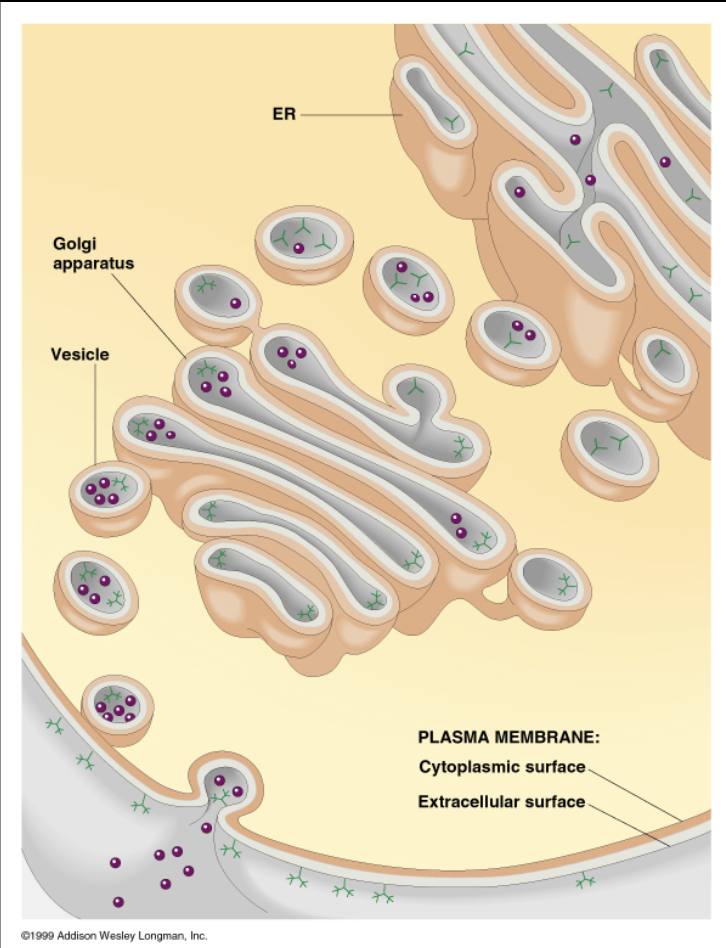
Membranes are bifacial
the inside layer is different than the outside layer, since proteins have specific orientations and carbohydrates are found only on the outer surface.
the outside of the plasma membrane is the same as the inner surface of the ER, golgi, and vesicle membranes
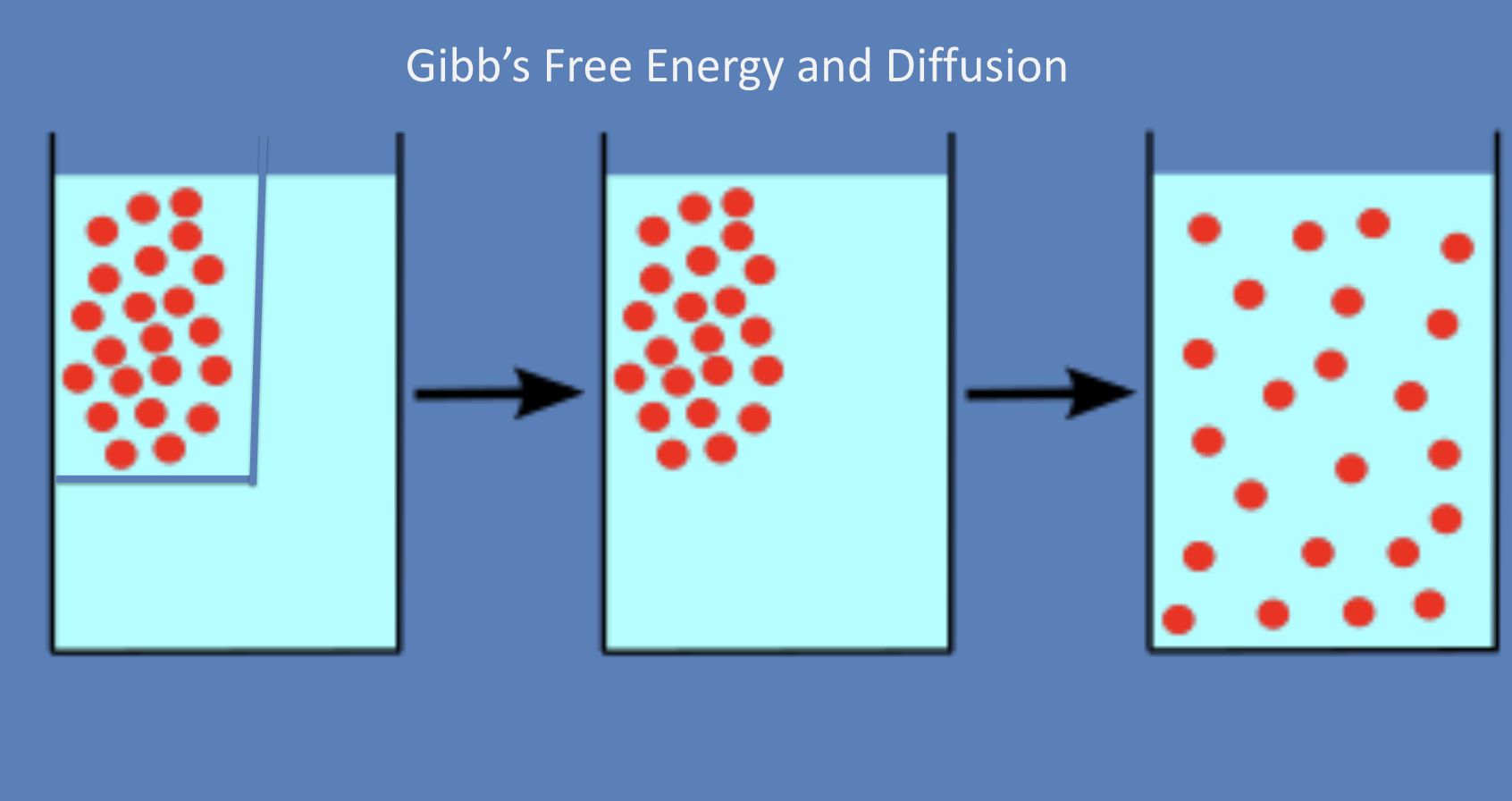
Gibb’s Free Energy and Diffusion
Diffusion is spontaneous because particles move down their chemical potential gradient, making the Gibbs free energy change negative until equilibrium (ΔG = 0) is reached.
When diffusion happens, entropy increases and Gibb’s free energy decreases
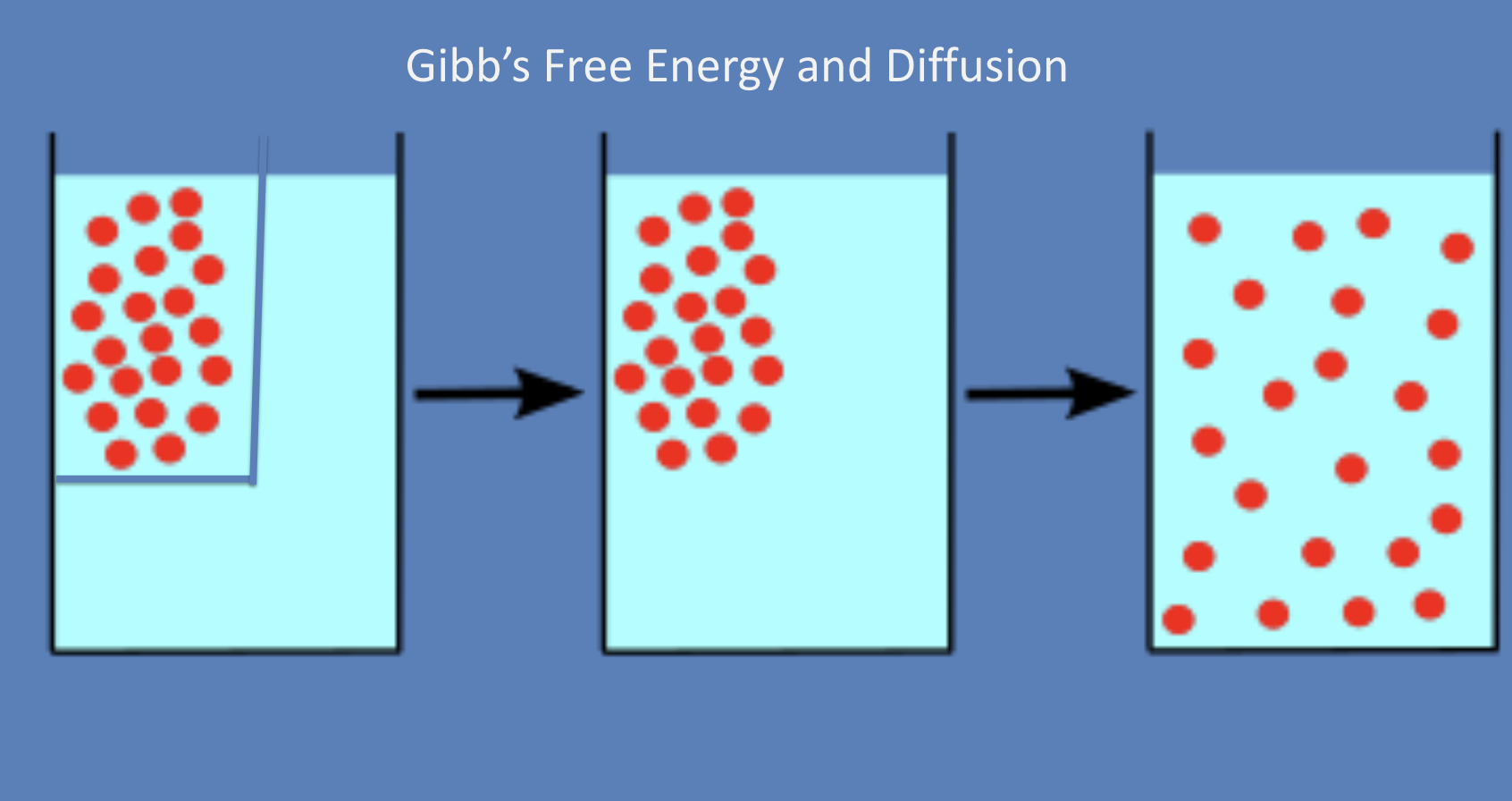
Osmosis
Net movement of water across a semipermeable membrane from an area of low solute to high solute
3 types of tonicity
Hypertonic: increases in volume, when there is a higher solute concentration
Hypotonic: decreases in volume, when there is a lower solute concentration
Isotonic: stable volume, no net flow change, when there is equal solute concentration
Red blood cells’ ideal condition
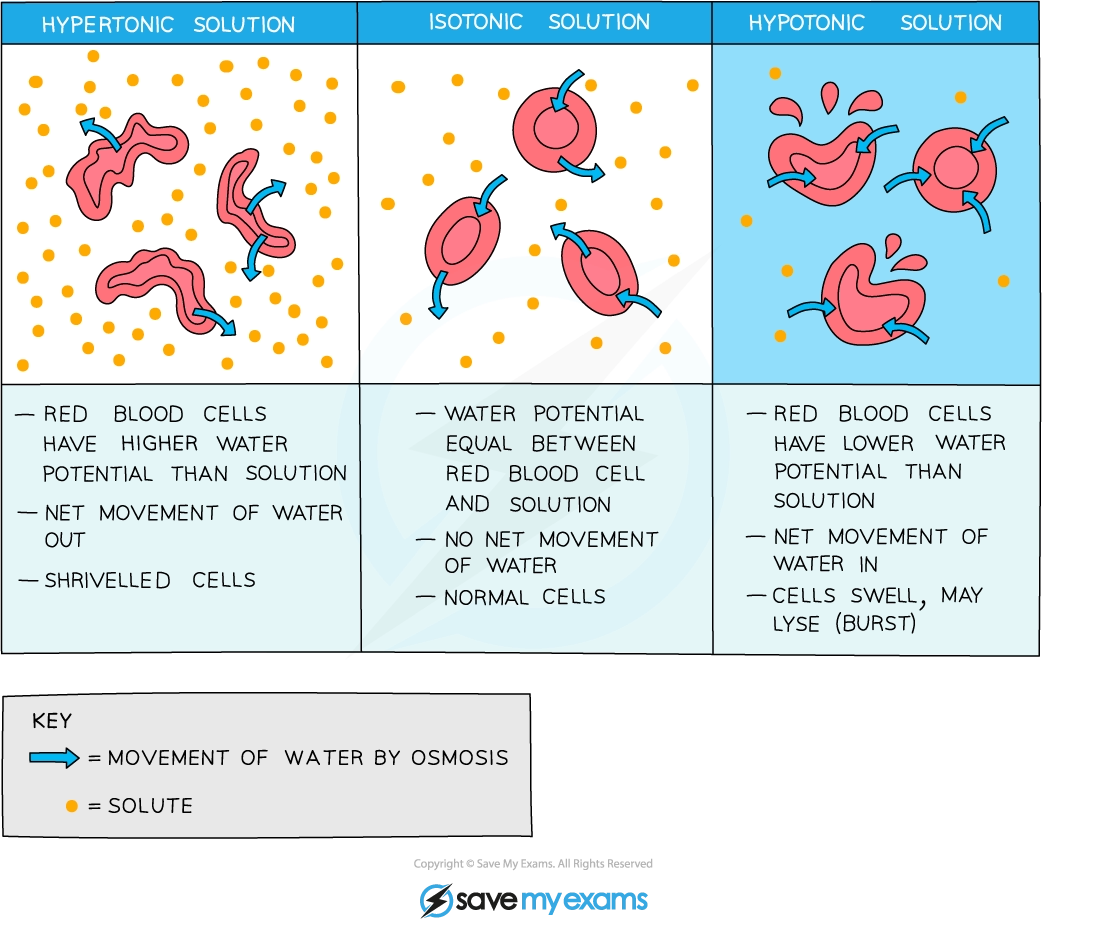
Passive Transport
transportation that does not require ATP, whcih moves down a concentration gradient
Allows small molecules, nonpolar molecules, and uncharged molecules
Facilitated diffusion:
diffusion involving channel proteins that may be gated which open or close in response to a ligand
involves substances that have charged or are too big
support from proteins in order to pass through hydrophobic parts
may involve carrier proteins
Facilitated diffusion systems can be saturated
Carrier proteins: carry substances into the cell
Channel protein: has holes to allow ions into the cell
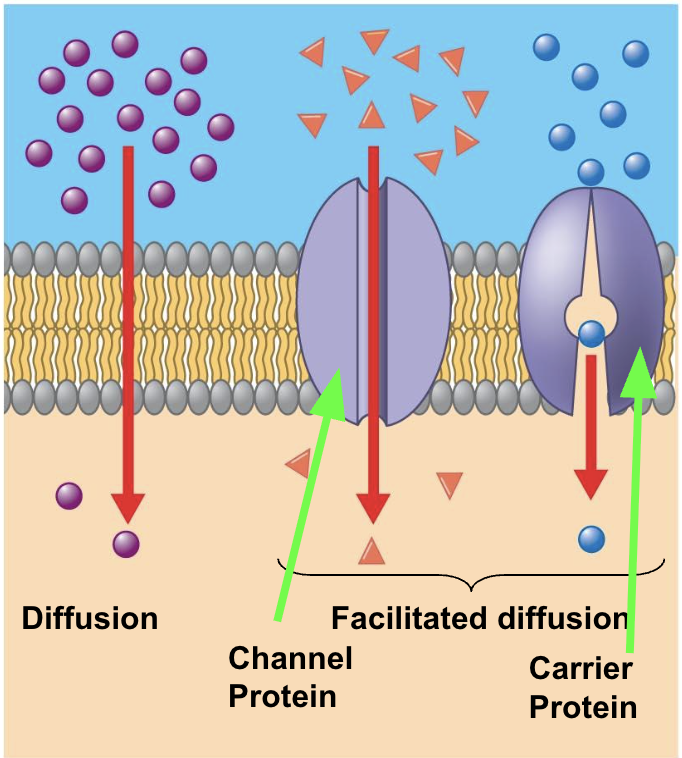
Electrochemical gradient
the combined force of a chemical gradient and an electrical gradient that drives the movement of ions across a membrane
the positive and negative charges are seperated by the membrane
Inside the cell would have extra negative charges compared to the outside
Active Transport
Requires input of energy to move substances AGAINST their concentration gradients
can have secondary and primary active transport
Primary active transport
uses chemical energy
ex. sodium potassium pump
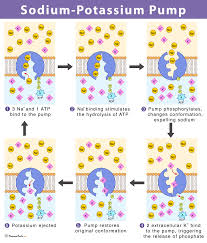
sodium-potassium pump
has an integral membrane protein that pumps sodium out and potassium into the cell
Involves ATP
Typically, there is a higher concentration of sodium outside, and a lower concentration of potassium outside
How it works:
The pump is open to the inside of the cell. The pump has a high affinity for sodium ions, so it takes 3 sodium ions
The sodium binding to the protein triggers hydrolysis of ATP → P-group is attached to get phosphorylated while ADP gets released
Phosphorylation changes the pump’s shape, re-orienting it so that it opens towards the extracellular space, where the pump no longer has a high affinity for sodium and releases it
The pump switches and now has a high affinity for potassium, which binds the 2 potassium ions and triggers the phosphate to be removed
Without the phosphate, the pump returns to its original shape, facing inward
Inward, they lose affinity for potassium and release it. The process begins from number 1 again.
Secondary active transport
use electrochemical gradient as an energy source
Does not directly require chemical energy
Proton sucrose pump
secondary active transport
The proton pump pumps h+ across a membrane to establish a gradient
A cotransporter will then pump an H+ back into the cell, carrying a long a sucrose molecule
The cotransport protein relies on the proton gradient created by the proton pump to function. If the pump stops, the gradient is lost and cotransport ceases.
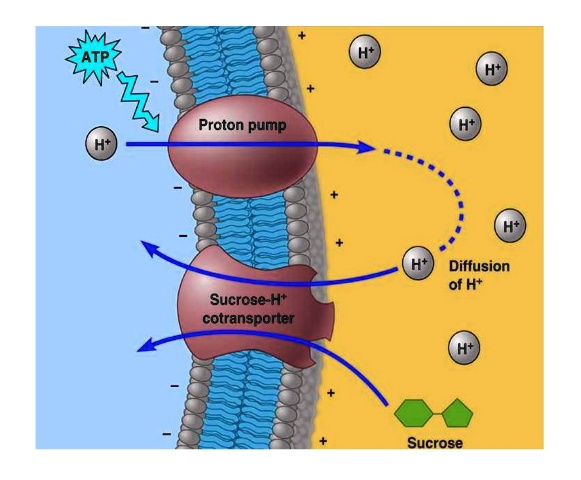
Symporter v.s Antiporter
The main difference is the direction of transport: symporters move two or more substances in the same direction across a membrane, while antiporters move two substances in opposite directions.
antiporters have one thing going against the concentration gradient and the other going down concentration gradient
Endocytosis
For things that are too large or too charged to pass directly through biological membranes and need to pass via vesicles
Bulk transport, which transports large particles or large quantities
Invaginates the molecule/s, forming a pocket which then pinches off with the help of proteins
Phagocytosis:
“cell eating”, transporting a large molecule to the lysosome for digestion
used to hunt pathogens
Pinocytosis:
“Cell-drinking”, taking in small amounts of extracellular fluid and molecules
held in smaller vesicles than phagocytosis
Receptor-mediated endocytosis:
Receptor proteins capture target molecules
The binding triggers endocytosis
may be used by harmful substances to gain access
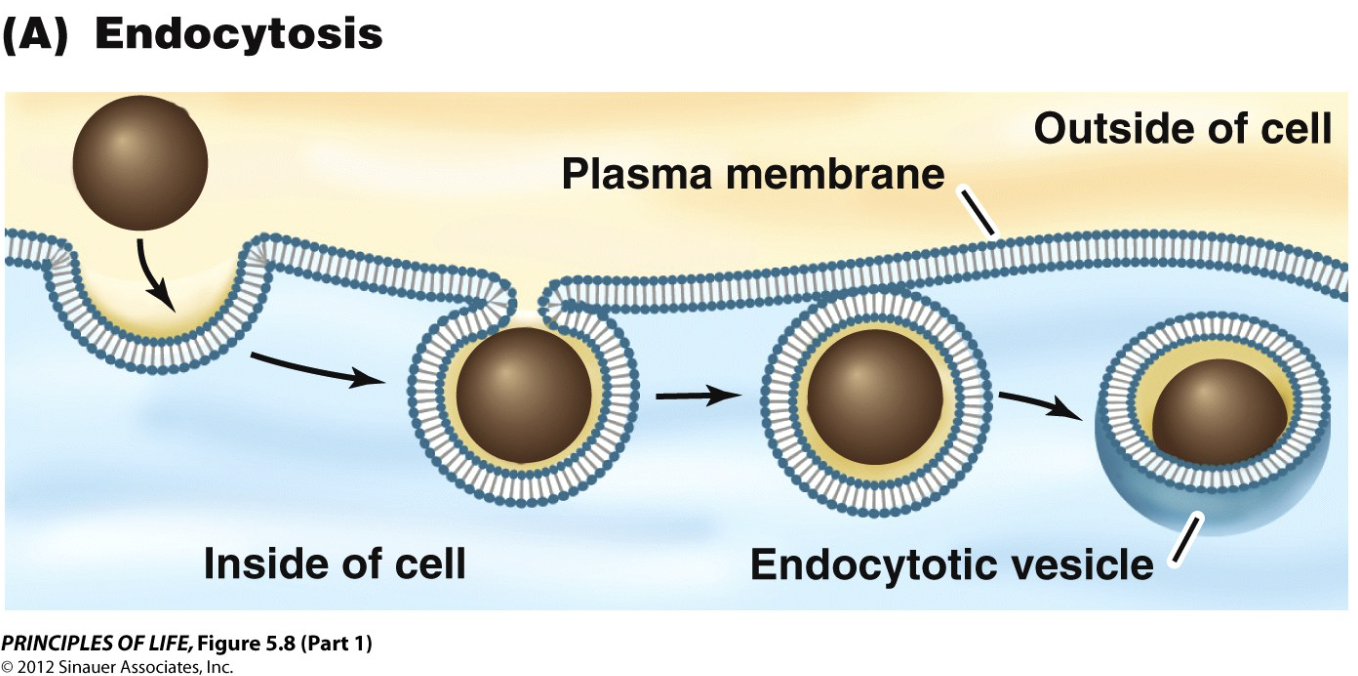
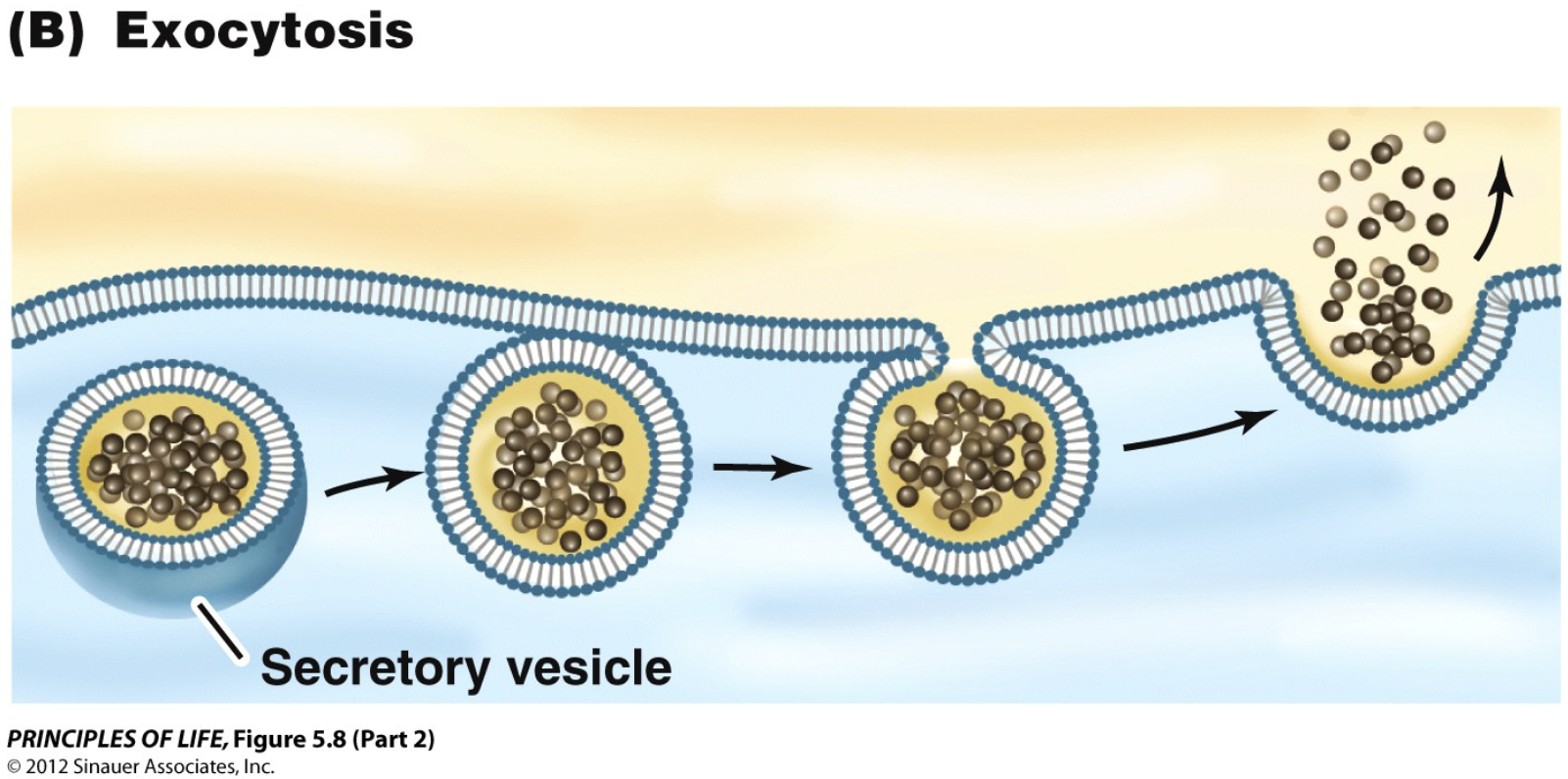
Exocytosis
Opposite of endocytosis
The vesicle becomes the cellular membrane
Extracellular matrix of animal cells
collagen: protein modified by carbohydrates that play a role in giving tissues strength and structural integrity
proteoglycans: interwoven with collagen and is attached to a long polysaccharide backbone
integrins: bridges between integrins and other proteins
integrins: anchor cell to extracellular matrix, help sense environment by detecting cehmical and mechanical cues from the extracellular matrix
Cell wall
can have a cubic structure
cell wall → plasma membrane → cytoplasm
combined with the vacuole’s pressure allows plants to stand up right
cell walls have fibrous polysaccharides that gives it its structure
in mature cells, once it stops growing, the layers of cellulose and molecules can be built to form a secondary cell wall layer
this is what allows wood to still have its rigidity and structure even without water
there are direct tunnels called plasmodesmata that allows small molecules to flow through the cell wall
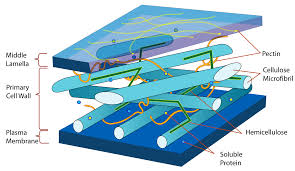
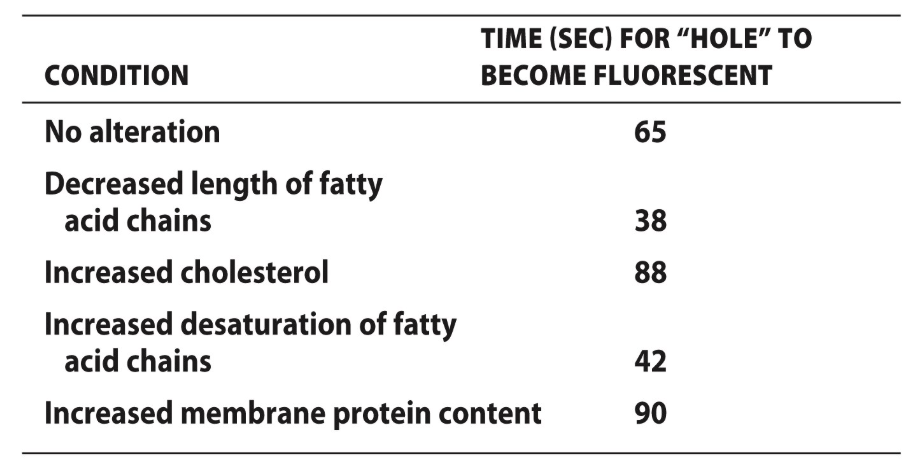
Explain this
Decreased FA chain length: Shorter tails → less interactions → more fluid, lipids spread into the hole quickly.
Increased desaturation: More C=C “kinks” prevent tight packing → more fluid → faster recovery.
Increased cholesterol: At typical physiological temps, cholesterol reduces lipid mobility → less fluid → slower recovery.
Increased membrane proteins: Protein crowds up and create obstacles for the phospholipids to rearrange → least fluid → slowest fill.
Water potential
pressure potential + solute potential (-iCRT)
water moves towards lower water potential
Volume and Surface Area formulas
